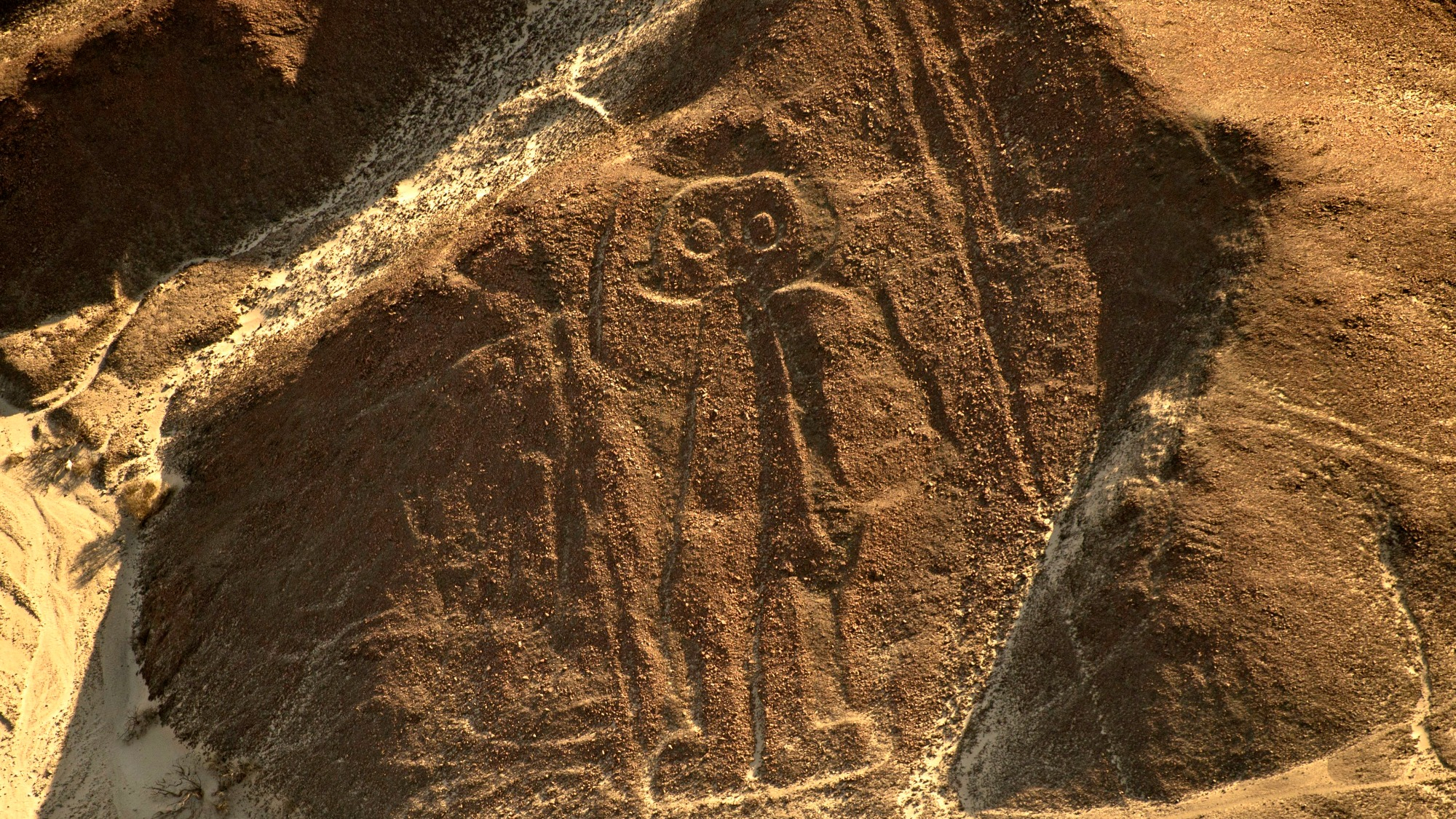

If you were able to view the southern coast of Peru from a bird’s-eye view, you’d be able to make out dozens of strange drawings of creatures: a giant spider, whale, hummingbird, and condor. These are the Nazca lines, Peru’s own archaeological enigma. First discovered in the early 20th century, these lines were supposedly made from around 400 BCE to 650 CE, but how people created the desert pictures, tens to hundreds of feet long, is still somewhat shrouded in mystery.
While hundreds of these strange drawings have already been found, there are still more that elude even the most careful observer. Which is why new searches rely on nonhuman helpers. An artificial intelligence method was able to recently scope out four new lines, according to a report in the Journal of Archaeological Science.
Researchers, including lead author Masato Sakai, a professor of anthropology and archaeology at Yamagata University in Japan, have been looking for hidden Nazca lines for years—and as of December 2022, his team had found 168 new geoglyphs across the Nazca Pampa using satellite imagery, aerial photography, LIDAR scanning, and other methods. In 2016, after capturing a few especially high-resolution photos of the lines, Sakai and his team took things a step further, according to Live Science.
[Related: What the longest-lasting Mesoamerican cities all had in common.]
Teaming up with IBM Japan and IBM’s Thomas J. Watson Research Center in the United States, the researchers used 21 known Nazca geoglyphs to train the deep learning system on what to look for, or elements commonly found in the drawings. Then they set their program to work combing through aerial photos. The first AI-captured Nazca line, an odd-looking humanoid, was found back in 2019, and just recently the software has uncovered three more, which include a 250-foot-long pair of legs and a 62-foot-long fish.
The deep learning system, according to the report, is about 21 times faster than a human when it comes to analyzing aerial photographs. Poring over the entire Nazca Pampa to identify figurative drawings (not including the many geometric or linear ones) would take around 68 days straight for a human archeologist, according to the paper. With the help of the AI, that could take only 78 hours.
Much like other culturally or ecologically important sites, the Nazca lines face threats from climate change, human activity, and more. Time is of the essence to find and preserve these eccentric pieces of human history—and Sakai and team write that the pairing of field research and AI could lead to “more efficient and effective investigations.”
